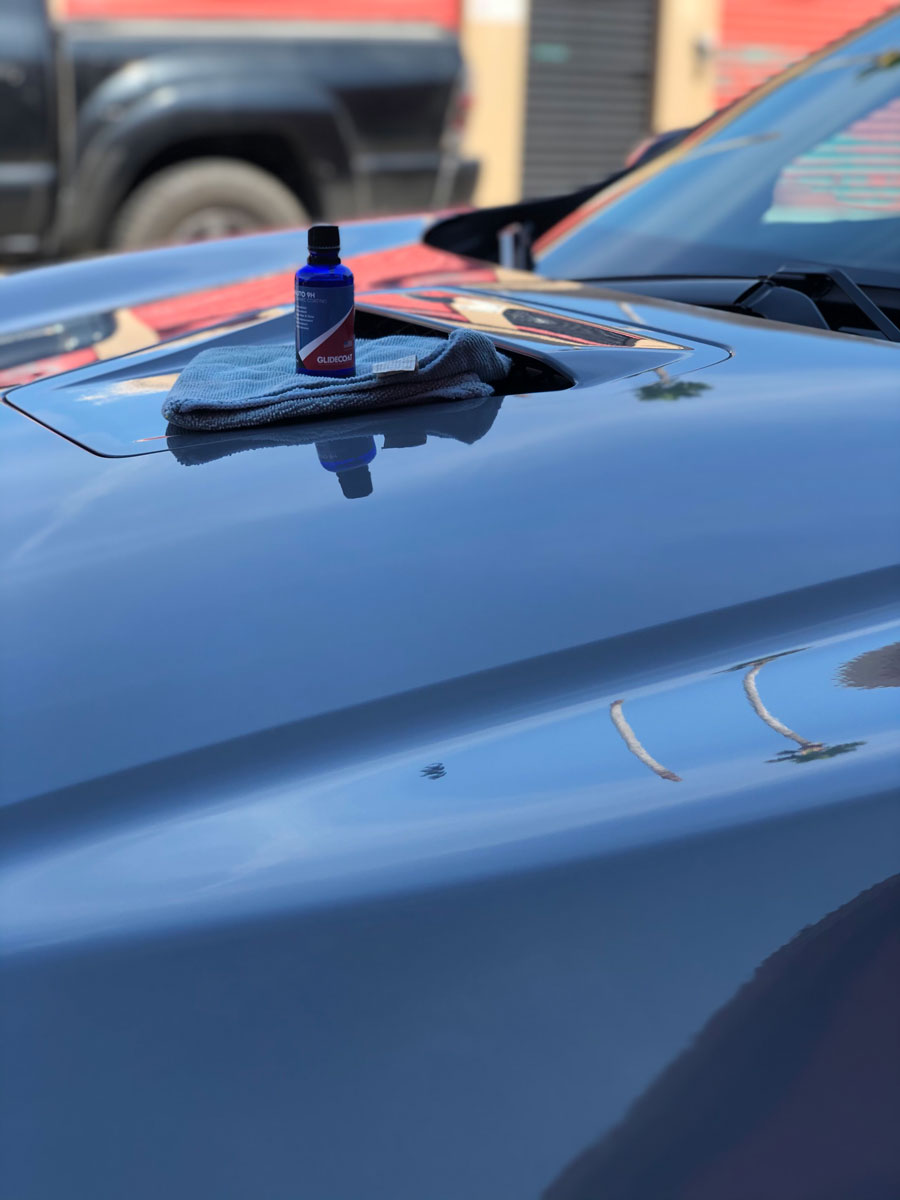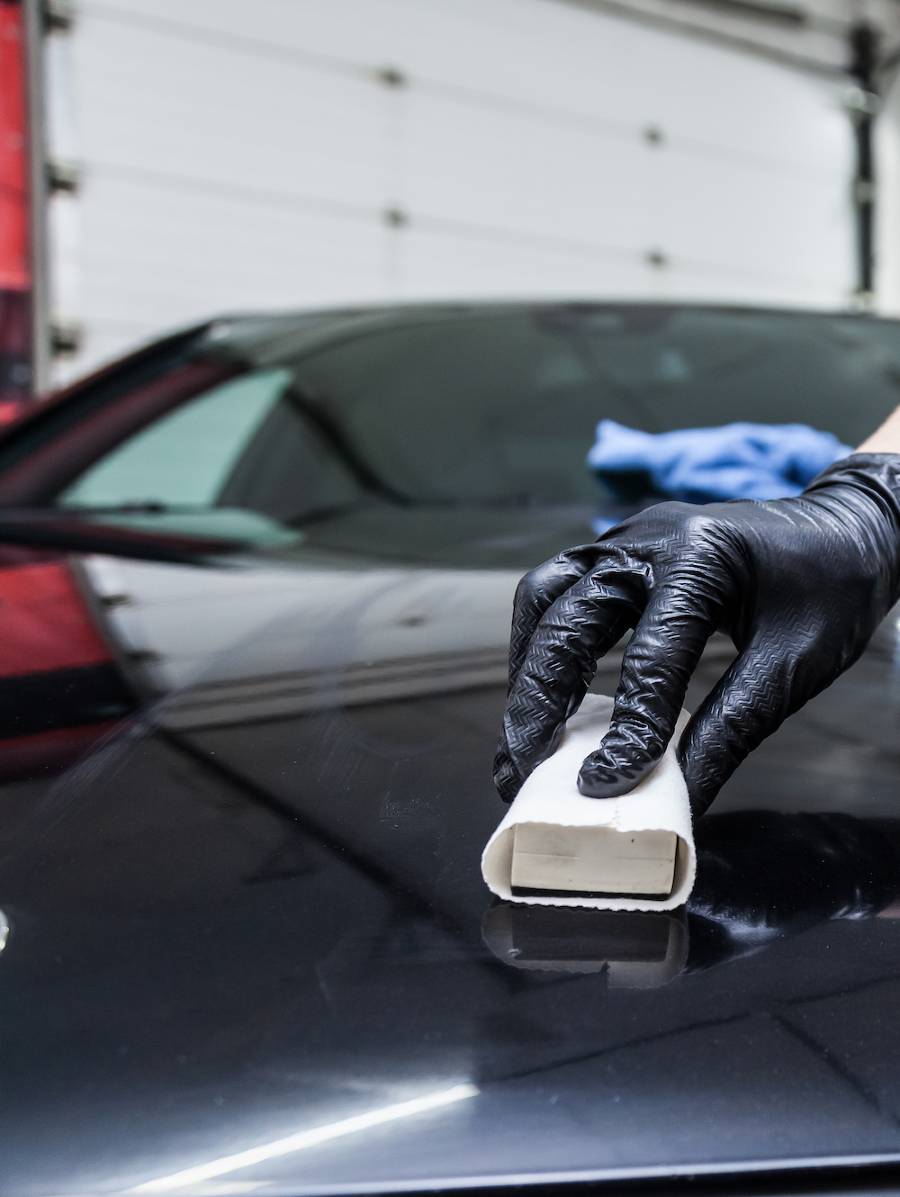The Duty of Ceramic Finish in Securing Your Automobile's Paint From Environmental Damage
Ceramic coating has arised as an innovative service for auto owners seeking to protect the integrity of their car's outside. As we discover the subtleties of ceramic coating, it ends up being obvious that the selection to apply this protective measure could dramatically influence your automobile's long life and visual.
What Is Ceramic Coating?
Ceramic finishing is a sophisticated fluid polymer used to the exterior surfaces of an automobile, made to provide a resilient layer of security for the paint. This ingenious option develops a chemical bond with the automobile's manufacturing facility paint, developing a hydrophobic and resilient shield. The finishing includes nanoparticles that fill out the microscopic flaws in the paint, causing a smooth surface area that enhances gloss and beam.
Generally, ceramic layers are available in various formulations, enabling various degrees of defense and longevity. While some items can last for a number of months, others provide protection for several years, depending on the density of the application and ecological aspects. The application process calls for precise prep work, consisting of washing, decontaminating, and brightening the car's surface area to make sure optimum bond of the finish.

Benefits of Ceramic Finishing
One of the key advantages of using a ceramic finish is the phenomenal security it offers to auto paint. This sophisticated coating develops a resilient layer that shields the automobile's surface from a variety of ecological hazards, consisting of UV rays, acid rain, bird droppings, and tree sap. By supplying this robust defense, ceramic finishes substantially reduce the threat of fading and etching, preserving the auto's aesthetic allure over time.
Along with protection, ceramic finishings are renowned for their hydrophobic homes, which fend off water and dust, making it simpler to preserve a tidy car. This self-cleaning impact reduces the frequency of cleaning, conserving both time and resources. Ceramic finishings enhance the depth of the paint's gloss, resulting in a refined and lively look that boosts the overall look of the car.
One more remarkable advantage is the long life of ceramic coatings. Unlike conventional waxes or sealants that need regular reapplication, ceramic finishes can last numerous years, supplying an economical option for vehicle owners seeking long-lasting security. Overall, purchasing ceramic finishing results in improved toughness, lowered upkeep, and continual visual charm for vehicle paint.
Exactly How Ceramic Finishing Works
A ceramic finishing operates through a chemical bonding procedure that develops a safety layer on the automobile's paint surface area. This innovative solution utilizes sophisticated nanotechnology, where tiny bits of silica are suspended in a liquid kind - ceramic coating. Upon application, these bits bond with the factory paint, forming a sturdy and hydrophobic layer that boosts the car's surface
The major part of ceramic finishes, silicon dioxide (SiO2), contributes to the covering's strength and strength. When treated, the coating changes right into a difficult, glass-like finish that guards the paint from environmental impurities such as dirt, UV rays, bird droppings, and tree sap. This molecular bond results in a surface area that is not only immune to scrapes but additionally much easier to clean, as dust and gunk are less most likely to adhere.
In addition, the hydrophobic residential or commercial properties of ceramic coatings create water to bead and slide off, lowering the chances of water spots and natural resource. This safety barrier properly lengthens the life of the paint and maintains the lorry's aesthetic allure, offering auto owners a long-lasting option for paint protection.
Application Process of Ceramic Finishing
When taking into consideration the application of ceramic covering, prep work is vital to achieving ideal outcomes. The primary step involves extensively washing the car to eliminate dust, crud, and contaminants from the surface. This typically consists of a purification procedure making use of clay bars or chemical cleaners to ensure the paint is completely tidy. Any kind of flaws or her comment is here scratches must be resolved at this phase, as the coating will bond with the surface area below.

Ceramic finishing is then applied in small sections, generally utilizing an applicator pad. It is important to work in even strokes, guaranteeing uniform coverage. The coating needs to be permitted to heal for a specified time, which can vary depending on the item used. After the preliminary application, a top notch microfiber towel is utilized to buff the surface area, boosting gloss and making sure a smooth surface. The automobile ought to be left to cure in a regulated atmosphere to allow the layer to completely bond with the paint.
Long-Term Maintenance and Treatment
Accomplishing an effective ceramic finishing application establishes the structure for long-term defense, yet proper maintenance is vital to preserving its advantages. Regular cleaning is important; making use of a pH-neutral automobile hair shampoo will certainly aid maintain the layer's stability without creating damage. Prevent automated car cleans that usage abrasive products, as they can endanger the covering's surface area.

Moreover, using a ceramic finishing upkeep spray can enhance the existing layer, giving an extra increase in security and sparkle. It's advisable to perform this every three to six months, depending upon ecological direct exposure.
Lastly, vehicle parking in shaded locations or making use of car covers can prevent prolonged exposure to hazardous UV rays and environmental pollutants, additionally expanding the life of your ceramic layer. By sticking to these upkeep techniques, you can guarantee your lorry's coating continues to be safeguarded and aesthetically appealing for several years ahead.
Verdict
In recap, ceramic finish serves as a crucial safety action for vehicle paint, successfully protecting automobiles from a variety of environmental risks. Its ability to develop a durable hydrophobic obstacle not only enhances visual allure yet additionally dramatically minimizes the frequency and intensity of upkeep needed. The lasting nature of this advanced polymer underscores its worth in protecting car integrity and look, eventually adding to an extra long lasting and aesthetically attractive automotive coating.
Ceramic finishing is an advanced fluid polymer applied to the exterior surface areas of a car, made to supply a resilient layer of defense for the paint. Ceramic finishes enhance the deepness of the paint's gloss, resulting in a lively and polished look that elevates the total look of the automobile.
A ceramic covering runs through a chemical bonding procedure that creates a safety layer on the vehicle's paint surface area.The main component of ceramic layers, silicon dioxide (SiO2), contributes to the layer's stamina and strength.In summary, ceramic finish serves as a crucial safety step for vehicle paint, effectively securing vehicles recommended you read from a variety of ecological threats.